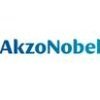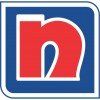Filter interviews by
Jubilant Ingrevia Interview Questions and Answers
36 Interview questions
Instrumentation refers to the technology and devices used to measure, control, and monitor physical quantities in various fields.
Instrumentation involves sensors, transducers, and controllers to gather data.
Common applications include temperature measurement (thermometers) and pressure monitoring (manometers).
It plays a crucial role in industries like manufacturing, aerospace, and healthcare.
In the medical field, ...
Implementing innovative strategies to reduce costs while maintaining efficiency and sustainability in power generation.
Adopt advanced predictive maintenance techniques to reduce downtime and repair costs, e.g., using IoT sensors for real-time monitoring.
Implement energy efficiency programs, such as optimizing boiler operations and heat recovery systems to minimize fuel consumption.
Explore renewable energy integrat...
Implementing strategies like smart technology, demand response, and renewable energy can significantly enhance utility efficiency.
Adopt smart grid technology to optimize energy distribution and reduce losses.
Implement demand response programs to manage peak load and encourage energy conservation.
Invest in renewable energy sources, such as solar and wind, to diversify energy supply and reduce reliance on fossil fue...
A SWOT analysis identifies strengths, weaknesses, opportunities, and threats for effective strategic planning.
Strengths: Strong leadership experience in managing diverse teams.
Weaknesses: Limited exposure to certain advanced technologies.
Opportunities: Growing market demand for innovative solutions.
Threats: Increasing competition from established players.
What people are saying about Jubilant Ingrevia







An offline emergency refers to critical situations requiring immediate action without online resources.
Types of offline emergencies include natural disasters (e.g., earthquakes), technical failures (e.g., power outages), and health crises (e.g., pandemics).
Effective handling involves having a robust emergency response plan that includes evacuation routes and communication strategies.
Training staff in first aid and...
Managing a large site with hazardous chemicals involves safety, compliance, and logistical challenges.
Safety protocols: Ensuring all staff are trained in handling hazardous materials, e.g., using PPE and emergency response drills.
Regulatory compliance: Adhering to local and international regulations like OSHA and EPA, which require regular audits and documentation.
Inventory management: Keeping track of multiple pr...
Check lubrication, alignment, load conditions, and cooling systems to diagnose gearbox heating issues.
Inspect lubrication levels and quality; low or contaminated oil can cause overheating.
Check for proper alignment; misalignment can lead to increased friction and heat.
Evaluate the load conditions; excessive load can cause the gearbox to overheat.
Examine the cooling system; ensure that any cooling mechanisms are fu...
Check various factors affecting pump flow, including mechanical issues, system design, and operational parameters.
Inspect for blockages in the suction line or discharge line, such as debris or sediment buildup.
Check the pump's impeller for wear or damage, which can reduce flow efficiency.
Verify that the pump is operating at the correct speed; incorrect RPM can lead to insufficient flow.
Ensure that the pump is prop...
HIRA stands for Hazard Identification and Risk Assessment. It is a process used to identify potential hazards and assess the associated risks in a workplace or project.
HIRA involves identifying hazards, evaluating the risks associated with those hazards, and implementing control measures to mitigate the risks.
The process typically includes hazard identification, risk assessment, risk control, and monitoring and re...
Flash point is the temperature at which a solvent gives off enough vapor to ignite in air.
Flash point is a safety measure for handling solvents.
Different solvents have different flash points.
Examples: Acetone (−20 °C), Ethanol (13 °C), Gasoline (-40 °C)
Jubilant Ingrevia Interview Experiences
46 interviews found
- Q1. Purchase order, Pr, MIS
- Q2. Dally pending order update
- Q3. Work order, pending delivery stutus
- Q4. I am frasher
- Q5. Good negotiations
- Q6. Po maintain in LN
Interview Preparation Tips
(2 Questions)
- Q1. If gearbox heating what should first check
- Ans.
Check lubrication, alignment, load conditions, and cooling systems to diagnose gearbox heating issues.
Inspect lubrication levels and quality; low or contaminated oil can cause overheating.
Check for proper alignment; misalignment can lead to increased friction and heat.
Evaluate the load conditions; excessive load can cause the gearbox to overheat.
Examine the cooling system; ensure that any cooling mechanisms are functio...
- Q2. Pump flow not sufficient what should be the check
- Ans.
Check various factors affecting pump flow, including mechanical issues, system design, and operational parameters.
Inspect for blockages in the suction line or discharge line, such as debris or sediment buildup.
Check the pump's impeller for wear or damage, which can reduce flow efficiency.
Verify that the pump is operating at the correct speed; incorrect RPM can lead to insufficient flow.
Ensure that the pump is properly ...
Interview Preparation Tips
I applied via Company Website and was interviewed before Dec 2023. There were 2 interview rounds.
(2 Questions)
- Q1. Regarding work and experience
- Q2. Regarding Reaction related questions
(2 Questions)
- Q1. What is your overall work experience, and what specific experience do you have working in a plant environment?
- Ans.
I have over 10 years of work experience, with 5 years specifically in a plant environment.
Worked in a manufacturing plant for 5 years overseeing production processes
Managed a team of technicians and operators to ensure smooth operations
Implemented efficiency improvements that resulted in cost savings
Knowledge of safety regulations and protocols in a plant setting
- Q2. What are your daily work responsibilities?
- Ans.
As a Senior Research Associate, my daily work responsibilities include conducting research, analyzing data, writing reports, and collaborating with team members.
Conducting research on specific topics or projects
Analyzing data collected from experiments or surveys
Writing reports summarizing research findings
Collaborating with team members to discuss research progress and findings
Interview Preparation Tips
I appeared for an interview in Oct 2024, where I was asked the following questions.
- Q1. Chemical engineering
- Q2. Costing , designing
I appeared for an interview in Nov 2024, where I was asked the following questions.
- Q1. What are your plans for the next five years?
- Q2. Why were you hired?
(5 Questions)
- Q1. Boiler light up
- Q2. Boiler in feed water ph
- Ans.
The pH of the feed water in a boiler is an important parameter that needs to be controlled for efficient and safe operation.
The pH of the feed water affects the corrosion rate of the boiler and its components.
A pH value below 7 indicates acidic water, while a pH value above 7 indicates alkaline water.
Maintaining the feed water pH within the recommended range helps prevent corrosion and scaling.
Chemical treatment is oft...
- Q3. Ash handling system
- Q4. Afbc cfbc and whrb
- Q5. Turbine operations
(1 Question)
- Q1. Questions related to Profile and work experience.
I applied via Walk-in and was interviewed in Jul 2023. There were 3 interview rounds.

(2 Questions)
- Q1. Ask about your technical knowledge
- Q2. Ask about your your skills.
(2 Questions)
- Q1. Experience based interview
- Q2. Educational knowledge
Interview Preparation Tips
I applied via Naukri.com and was interviewed in May 2023. There were 4 interview rounds.

(2 Questions)
- Q1. Project execution work,
- Q2. Project material
(2 Questions)
- Q1. About ctc, stability
- Q2. Working scope and culture
(2 Questions)
- Q1. Stability and Family discussion
- Q2. How to manage the site
- Ans.
Managing the site involves overseeing operations, ensuring safety and compliance, coordinating with staff and contractors, and maintaining a clean and organized environment.
Establish clear communication channels with staff and contractors
Implement safety protocols and ensure compliance with regulations
Regularly inspect the site for maintenance needs and address them promptly
Coordinate schedules and tasks to optimize ef...
Interview Preparation Tips
How to development Rural arias basic tecnic
What is work in corporate social responsibility
Jubilant Ingrevia Interview FAQs
Some of the top questions asked at the Jubilant Ingrevia interview -
The duration of Jubilant Ingrevia interview process can vary, but typically it takes about less than 2 weeks to complete.
Tell us how to improve this page.
Jubilant Ingrevia Interviews By Designations
- Jubilant Ingrevia Deputy Manager Interview Questions
- Jubilant Ingrevia Production Chemist Interview Questions
- Jubilant Ingrevia Mechanical Maintenance Engineer Interview Questions
- Jubilant Ingrevia Senior Executive Interview Questions
- Jubilant Ingrevia Apprentice Trainee Interview Questions
- Jubilant Ingrevia Engineer Interview Questions
- Jubilant Ingrevia Senior Engineer Interview Questions
- Jubilant Ingrevia Manager Interview Questions
- Show more
Interview Questions for Popular Designations
Overall Interview Experience Rating
based on 62 interview experiences
Difficulty level
Duration
Interview Questions from Similar Companies
Jubilant Ingrevia Reviews and Ratings
based on 554 reviews
Rating in categories
|
Assistant Manager
164
salaries
| ₹5.5 L/yr - ₹14 L/yr |
|
Deputy Manager
129
salaries
| ₹6 L/yr - ₹18.5 L/yr |
|
Production Chemist
99
salaries
| ₹2.5 L/yr - ₹6.5 L/yr |
|
Senior Engineer
62
salaries
| ₹5.5 L/yr - ₹10.5 L/yr |
|
Senior Executive
61
salaries
| ₹5.2 L/yr - ₹11 L/yr |

Berger Paints

Kansai Nerolac Paints

AkzoNobel

Godrej Industries Group
- Home >
- Interviews >
- Jubilant Ingrevia Interview Questions













